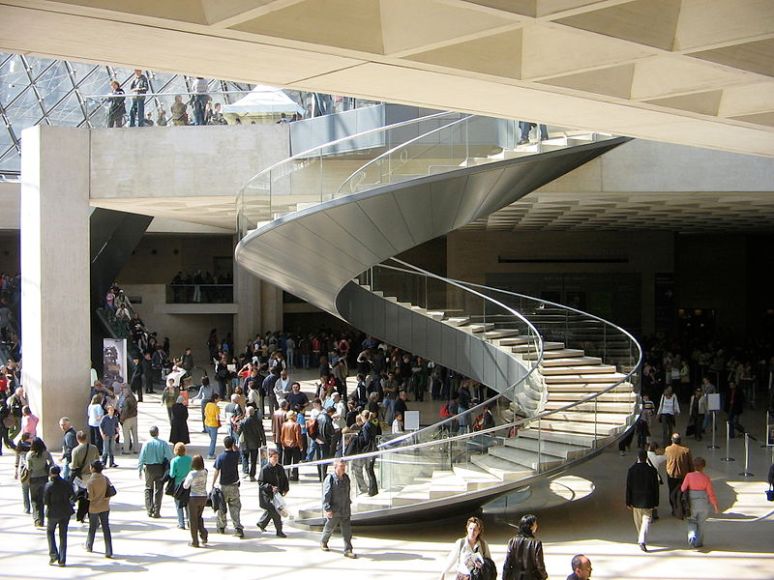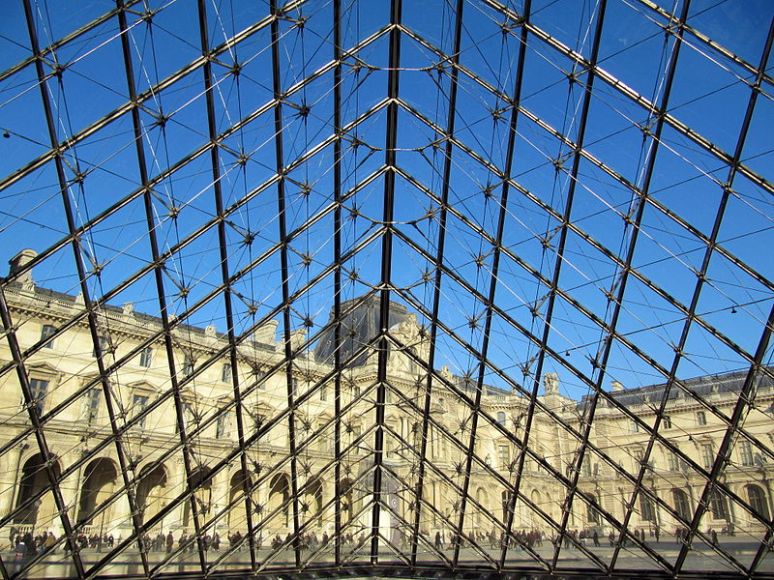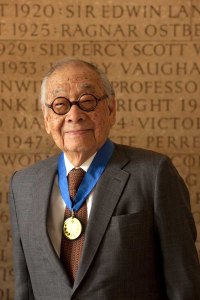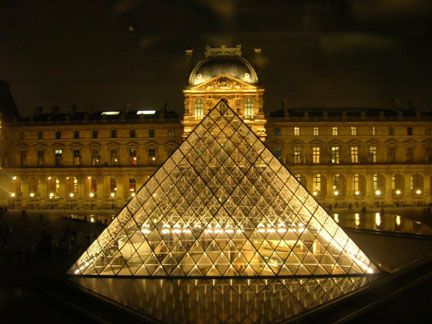It Is A Work Of Our Time
Frizz Tagged P: I. M. Pei
Leoh Ming (I.M.) Pei, who was born in China in 1917 and came to U.S. in 1935 in pursuing graduate studies at MIT and Harvard, He is known as a master of modern architecture.
This is the part II of the mini series. Part of this post may answer the question that most of us have wondered, “Why glass pyramid for Louvre?”
Bank of China Tower (Hong Kong, 1982-1989)
Challenge: To build a tall, 515 m (1,033.5 ft.) high, building that can resist earthquake and high wind. (Hong Kong has twice the wind loads in NY or Chicago.)
Pei’s big engineering breakthrough was distributing the weight from the top out and down to its four corners of the building. Each time, when the structure meets an intersection from the top level, thus, the weight is distributed to the next level of the structure. That was just one of the many engineering solutions.
(wikicommons)
Pei’s father was the first generation of the Bank of China. Thus, Pei felt obliged to take on this project. But, his father did not live to see the building of the bank. “It was my biggest regret.” he said.
The Glass Pyramid of Louvre (Paris, 1983-1989 phase I and 1989-1993 phase II)
Pei admitted that the challenge was difficult from the beginning, he said, “I don’t think I’d want to do another Louvre.” This described the unbearable obstacles he had encountered during the long 10 years.
(photo from wikipedia)
Pei’s vision was “Closing the path of the spirit of the past and modern times.” During that period of time, 90% of the people in France opposed his glass pyramid idea because they didn’t want to bring Egyptian Pyramid to Louvre.
Why glass pyramid?
Pei explains:
- The glass pyramid is a symbol that defines the entry to the Louvre. It is placed precisely at the center of gravity of the three pavilions. (Prior to the glass pyramid, Louvre had three different entrances/exits. Visitors had difficulty to find the path, entrances, and exits in any part of the three buildings.)
- It centralizes the entrances and exits (that Pei persisted this idea from the beginning). This idea also created an easy access to the Metro, city, and garden from Louvre.
- The triangle form is an effective solution to stabilize the structure and the glass brings sunlight that makes the underground space transparent.
- There was no relation between a stone pyramid in Egypt and our glass pyramid. One was constructed for the dead and the other for the living.

(wikicommons)
In 1989, Pei stated, ” The Grand Louvre will hold the first place in my life as an architect.” When asked how he felt about the accomplishment, Pei said, “I have to say that I am proud of it… but, I happened to be here, in 1983, at the right time. It is something greatly important in my life.”
Pei proved again that architecture must incorporate the daily function of a building more than simply an aesthetic gesture. Philip Jodidio commented, “He (Pei) showed that there need not be chasm between past and present and that contemporary architecture can integrate itself into a historic setting and improve it.”
(wikicommons)
It is a work of our time. – I.M. Pei
Notes:
- The structure holds 675 diamond-shaped panes and 118 trianular ones. It was an engineering challenge.
- Saint-Gobain refused to make clear glass, “If you have one thousand pyramids, I’ll make it for you…” Mitterrand (The former President of France) had to step in and order them to make, “Do it.”
- All the glass pieces had to send to England for polishing.
- in 1982, 3 million visitors, 6 million the year after the glass pyramid was completed, 8.3 million in 2006, and 9 million in 2010.

(wikicommons)
Part I: An Architect of His Time

Part III: You Still Can Go Home Again




You must be logged in to post a comment.